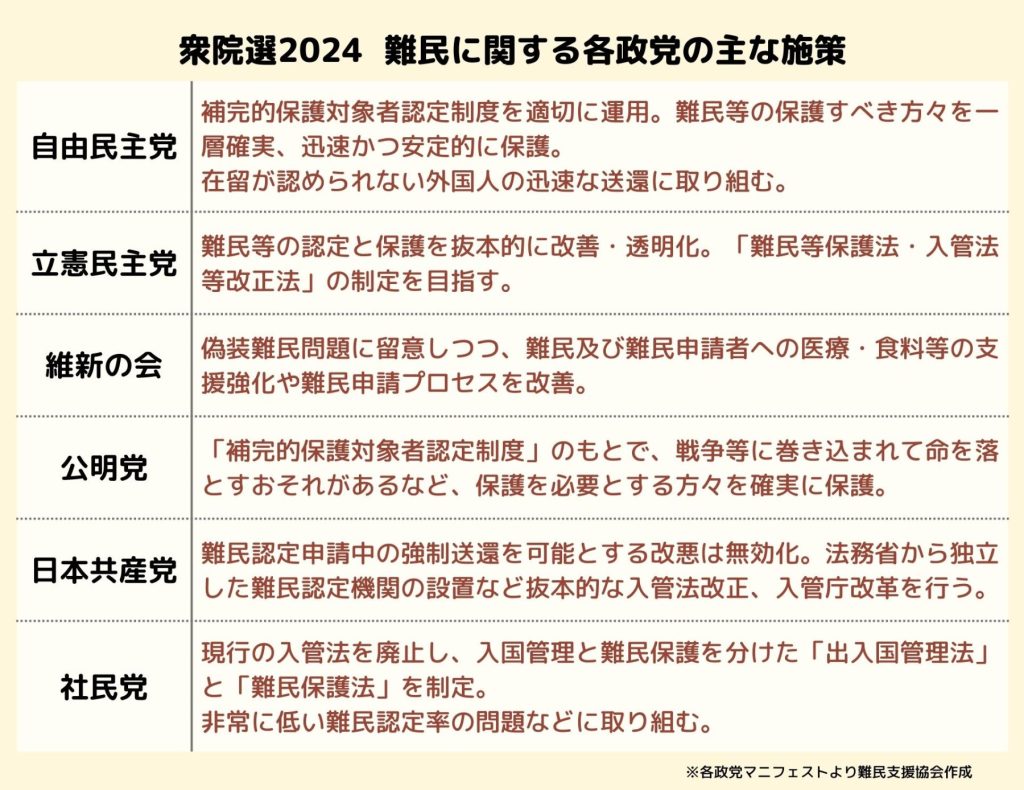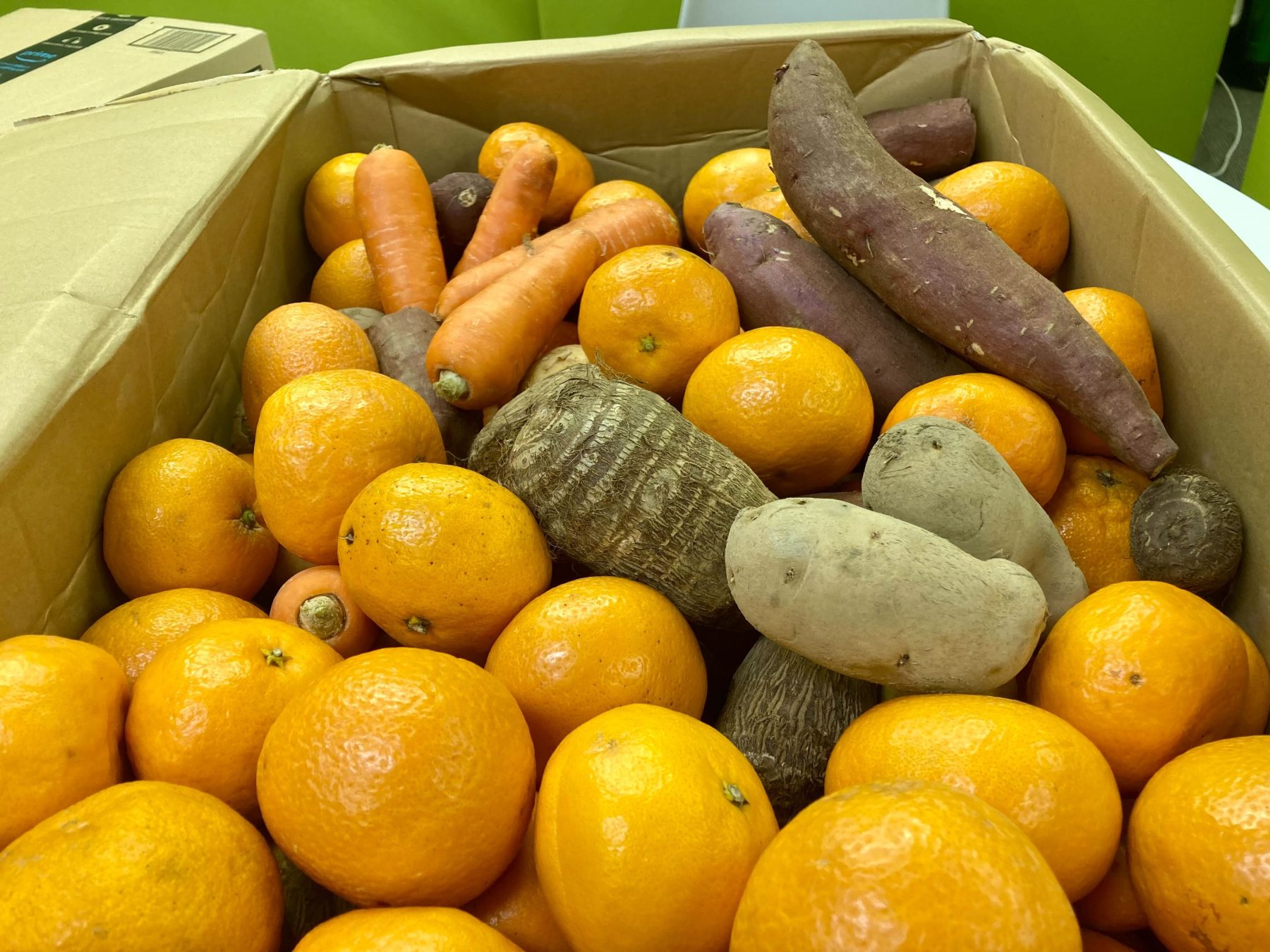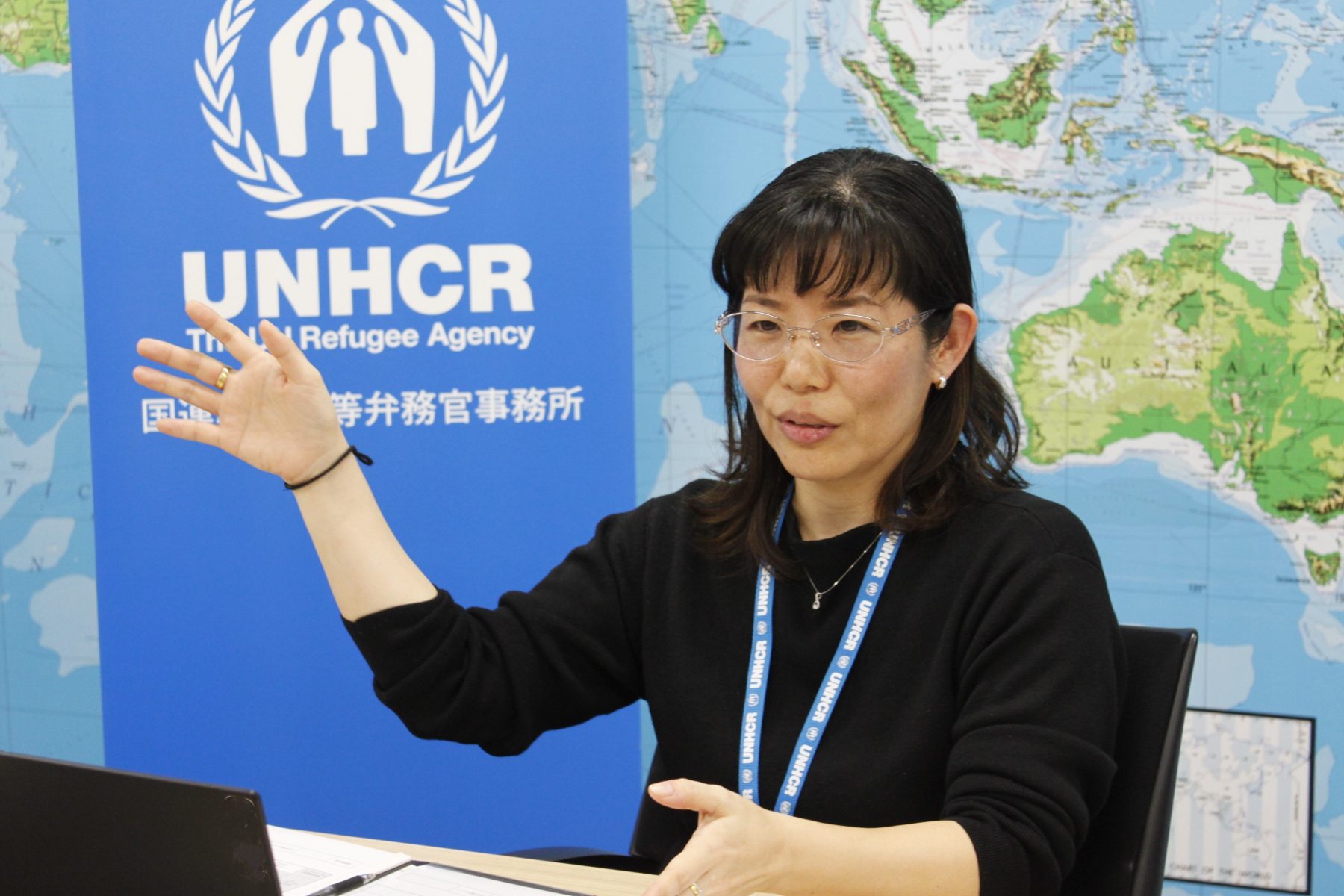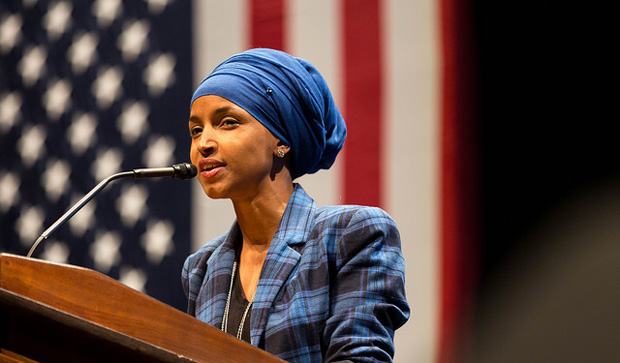
The results of the recent U.S. Presidential Election has left me, many of my fellow Americans, and many refugees across the U.S. living in fear of what a Trump-presidency could mean for their lives. As Gal Adam Spinrad, economic empowerment program coordinator for Refugee Women’s Network Inc. in Decatur, Georgia puts it:
“[Many refugees] are concerned their missing family members won’t be allowed to join them in America. They fear they will lose their green cards or be deported. Like their American counterparts, they worry about how they will get health insurance, whether they will be able to go to college, if their food stamps will be lowered…”
Transitioning from President Obama, who allowed 85,000 refugees into the U.S. in 2016 and increased that number to 110,000 for 2017. To President Trump, who called for a ban on Muslims entering the U.S. and will likely change the country’s refugee policy when he takes office, is going to be very challenging to say the least. But, let’s not get ahead of ourselves or let that overshadow the fact that on the same night of Hillary Clinton’s defeat, there was a huge win for the refugee community that evening.
On November 8th 2016, Ilhan Omar became the first Somali-American lawmaker in the U.S. As a former refugee, Muslim woman, and mother of three, Omar made history being elected to House District 60B in southeast Minneapolis, Minnesota. Omar’s win is just one indication of the positive impact that refugee resettlement has on the individuals resettled and the communities that receive them.
No matter the results of the recent presidential election, there are still Americans committed to receiving and assisting new refugees and vibrant supportive communities that want to see these individuals succeed in their new country. Communities like Minneapolis and San Diego, the U.S. city that has resettled the largest number of Syrian refugees to date, are models not only for other U.S. cities, but the world, on what an inclusive community that empowers its people and values diversity looks like, amidst a world that is seemingly more and more hesitant to open its doors.
As of June 2016, the UNHCR reported that there are more than 65.3 million people who have been forcibly displaced from their homes worldwide. Many of these people have fled their country and are living in places such as Turkey, Pakistan, and Ethiopia because it is unsafe for them to return home. Some choose to wait in camps and cities in hopes of being resettled in countries such as the United States, Australia, and Canada. While others try migrating to more developed countries in Europe and Asia. Each choice has its own set of challenges, but no matter the path there is the shared struggle of having to leave one’s home, move to a new country, and begin the integration process – sometimes in a community that is not particularly keen on welcoming refugees in the first place.
What can make this process easier is when a local community is open, willing, and prepared to welcome these newcomers, and San Diego is certainly one of these places. Located 30km north of Mexico and on the Pacific coast, San Diego is the 8th largest city in the U.S., the second largest in the state of California, and a third of its population is of Hispanic origin.
After Texas, California resettles the second largest number of refugees in the country, and for the past seven years San Diego has led the state in resettlement cases. Just this past year, San Diego received 2,338 refugees, 685 of which were Syrians. Others came from countries such as Afghanistan, Democratic Republic of Congo, Iran, Iraq, Myanmar, and Somalia.
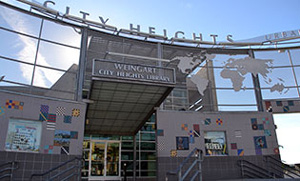 A majority of these new arrivals begin their journey living in one of two San Diego areas, City Heights or El Cajon. City Heights is a neighborhood located in the mid-city area and a home to many immigrant and refugee populations. Walking through City Heights, you can easily find yourself wondering what country you are in as you smell delicious foods from all over the world, hear many different languages being spoken, and see people of different races and ethnicities. Photo: City Heights Weingart Library
A majority of these new arrivals begin their journey living in one of two San Diego areas, City Heights or El Cajon. City Heights is a neighborhood located in the mid-city area and a home to many immigrant and refugee populations. Walking through City Heights, you can easily find yourself wondering what country you are in as you smell delicious foods from all over the world, hear many different languages being spoken, and see people of different races and ethnicities. Photo: City Heights Weingart Library
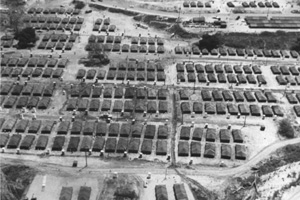 Along your walk you will pass by many Vietnamese restaurants and supermarkets. Many of these store owners and their families first arrived in the U.S. on Camp Pendleton, a U.S. military base located 80km north of San Diego that temporarily housed more than 50,000 Vietnamese refugees after the fall of Saigon in 1975. Camp Pendleton was one of a handful of bases, which housed refugees in tents and metal huts while they awaited immunizations and documentation that would allow them to resettle in local communities across the U.S. San Diego’s warm climate and access to City Height’s affordable housing attracted these new arrivals to this white suburban neighborhood and so began the process of transforming City Heights into the ethnic enclave it is today.
Along your walk you will pass by many Vietnamese restaurants and supermarkets. Many of these store owners and their families first arrived in the U.S. on Camp Pendleton, a U.S. military base located 80km north of San Diego that temporarily housed more than 50,000 Vietnamese refugees after the fall of Saigon in 1975. Camp Pendleton was one of a handful of bases, which housed refugees in tents and metal huts while they awaited immunizations and documentation that would allow them to resettle in local communities across the U.S. San Diego’s warm climate and access to City Height’s affordable housing attracted these new arrivals to this white suburban neighborhood and so began the process of transforming City Heights into the ethnic enclave it is today.
Photo: Camp Pendleton
Since the arrival of the first Vietnamese refugees more than four decades ago, the U.S. Congress has approved the Refugee Act of 1980, which instituted a formal resettlement program. The program contracts with nine resettlement agencies across the country to provide a holistic approach to help refugees become self-sufficient, contributing members of American society as quickly as possible. More than three million refugees have been welcomed into all 50 states since the arrival of the first Vietnamese refugees. Many of whom have made their way to City Heights, where you can now find Ethiopian and Salvadoran restaurants, a mosque filled with many Somalis and Sudanese, Halal markets, and the city’s first Burmese supermarket. The local library draws many students for its books and free Internet services and across the street the Mid-City campus provides free and low cost adult continuing education classes. Many of the newcomers spend their first years here taking free English classes, which are offered during the day and in the evening.
The city of El Cajon, located 20km east of City Heights, has also become a familiar neighborhood for new refugees arriving in San Diego, particularly for Arabic speakers from Iraq. Similarly to the migration of Vietnamese to City Heights, it started about 30 years ago when an Iraqi Chaldean immigrant moved to El Cajon, and since then the Arabic-speaking Iraqi community has continued to grow. Arabic markets and restaurants are becoming more common, and local banks and schools are even starting to hire Arabic speakers to assist the growing community. Just this past year, resettlement agencies have began resettling Syrians in this community as well.
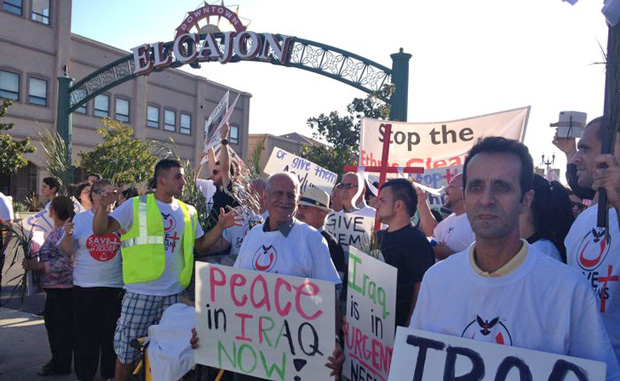
Photo: San Diego Chaldeans and community members march on Main Street in El Cajon at a rally to show support for Iraqi Christians, Aug. 19, 2014.
San Diego has four resettlement agencies working with these new arrivals, and I have had the opportunity to work with two of them, Alliance for African Assistance and the International Rescue Committee, in addition to volunteering with a number of smaller community-based organizations. Through these experiences, I have witnessed firsthand the supportive and constantly growing network that exists to serve refugees when they first arrive in San Diego.
Resettlement caseworkers and other agency staff, often times former refugees themselves, work closely with the new arrivals particularly in their first three months as they begin navigating the U.S. system – applying for IDs and Social Security Cards, going grocery shopping, using public transportation, and going to the doctor. English teachers, employment counselors, and financial education specialists further prepare the clients for employment and self-sufficiency in the U.S. through classes, trainings, and field trips in the community.
Video: Mohamad and Waheeda Tareq were my students when I worked as a Vocational ESL teacher for IRC
Despite this assistance, there are certainly challenges that the newcomers face after arriving in San Diego. Language and employment are two major barriers to integration for many new refugees. The government assistance is temporary, and so the clients are encouraged to find employment as soon as possible. Working minimum wage jobs are common, due to limited English skills when they first arrive. That, paired with the high cost of housing, causes them to spend upwards of 80% of their income on rent and utilities.
The Partnership for the Advancement of New Americans (PANA) recently published a report that found high housing costs, poor living conditions, emotional distress, and limited access to health care, as the four biggest challenges faced by new refugees arriving in San Diego. The study focused on refugees from East Africa, Thailand and Myanmar, with the goal to help the local organizations address and develop solutions to these particular problems. PANA is an organization started and run by a first generation Somali-American with the goal to advocate for the full economic, civic, and social inclusion of refugees in the San Diego County.
Beyond the resettlement agencies, smaller organizations in the city, such as PANA, have formed to assist in filling the gaps in services that the resettlement agencies don’t have the capacity to meet. Many of these organizations are started and run by refugees themselves and provide services such as after school tutoring, job training, and cultural and native language classes in an effort to preserve cultural identity.
In addition to providing tangible services to refugees, these groups and organizations exist to give a voice to these minority communities. Just this past July, the San Diego Unified School District board members voted unanimously in favor of creating a plan to address Islamophobia and bullying of Muslim students in the district, many of whom are refugees or first generation Americans born to refugee parents. This would not have happened if it weren’t for the members of the Council of American-Islamic Relations and the local students and families speaking up and sharing their experiences.
San Diego’s ethnic enclaves of refugees in City Heights and El Cajon are quite unique and come as huge resource for the community at large. Giving people exposure to different parts of the world without having to travel to those places, opportunities to eat food from different cultures, shop at different supermarkets, and hear different languages spoken. It gives our youth the opportunity to study and share ideas with people who have different beliefs and experiences from their own.
When I was a university student in San Diego studying Peace and Justice Studies I would contact staff at one of the resettlement agencies and ask to meet with refugees from the places I was studying about to learn about the situation from someone who is from there. Those conversations were always so eye opening and provided me with a perspective I could never get from attending classes, and reading academic articles and books. Those conversations are what ultimately led me to commit my life to working with this population and brought me to seek out Japan Association for Refugees (JAR) when I arrived in Tokyo earlier this year.
In my first few months with JAR my mind has been widened by three major differences when serving refugee and asylum seekers in a country that is not particularly open to the idea of refugees to begin with. My first taste was my first day at JAR when a staff member informed me that I am not allowed to ask a client for her or his name in front of other clients in the office – I needed to instead ask for their passport or for them to write their name on a piece of paper for me. In Japan, client confidentiality is taken to an entirely new level because of the refugees’ risk of detention and deportation, and the danger their friends and family could be in back home. It made complete sense once the repercussions were explained, but definitely wasn’t something I have ever thought about because my previous experience is working with people who already have legal refugee status.
The second major difference is the lack of community support for refugees outside of JAR and a few smaller organizations in Tokyo. I have taken for granted the immense network of non-profit organizations that exist within San Diego and much of the U.S. From homeless shelters, to after-school tutoring centers, and everything in between – there is rarely a lack of places to call when a client needs a service that you are unable to address yourself. At JAR it is quite common to have clients in need of a place to sleep, but the shelters that are available are not enough and the clients are forced to wait for space to open – this can take weeks or even months to happen, leaving them to stay awake in a 24-hour McDonalds or Internet café. In San Diego, homlessness amonsts the refugee population is a very rare occurance, but if it is an issue with a client the resettlement organizations have access to many different homeless shelters as well as undesignated funds for emergency situations.
The third major difference is just the sheer numbers. Both the U.S. and Japan have two of the largest economies in the world, they are both are signatories on the 1951 Refugee Convention, and are two of the highest contributors to the UN High Commissioner for Refugees. Yet just last year Japan received a record 7,586 applications for refugee status (this year the number is expected to surpass 10,000), and only 27 were granted, meanwhile the U.S. resettled 85,000 refugees. President Obama’s response to the Syrian refugee crisis was to accept 12,500 this past year, while Prime Minister Abe is allowing 150 Syrians over five years to enter Japan as exchange students not refugees.
As I walk through the streets of Tokyo and travel to different parts of the country, from Hokkaido to Okinawa, it is hard not to be in awe of this incredibly well-organized and beautiful country, filled with many polite and gracious people – most foreigners are. However, knowing what I know about the refugee situation in the country, and witnessing the incredible hardship that refugees face upon arriving here, not to mention what they had to endure before coming to Japan. I cannot help but be disappointed. Disappointed that a country that is as economically well off as Japan is and that does so many things right can get something so wrong. I have profound respect for all of the JAR staff and community members providing direct services to refugees and advocating for refugee rights, and I am committed to continue supporting their work in whatever way I can.
With this disappointment, I certainly do not want the takeaway to be that the U.S. is doing everything right because we certainly aren’t – look at who we just elected as president. But, I do think that there is something to learn from welcoming refugees into your country and giving them a chance to live in a safe and supportive environment with access to opportunities that enable them to lead self-sufficient lives. Something that communities in Minneapolis and San Diego have done well. I know as an American living in Japan I share the same hope as Ms. Spinrad has for refugees in the U.S., “that the incoming presidential administration – supported by the legislature on both sides of the aisle – will retain a spirit of inclusion that makes refugees feel not only welcome, but safe.” And as I continue my work with JAR I can only wish that that same spirit of inclusion further penetrates the community here so that refugees are offered a chance to put down roots and begin rebuilding their lives in Japan.
**Disclaimer: The content of this article is mine alone and does not necessarily reflect the views of the U.S. Government, the International Rescue Committee, or Alliance for African Assistance.

